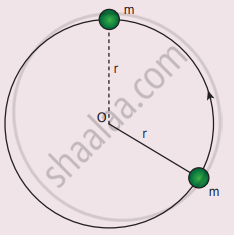Advertisements
Advertisements
प्रश्न
A body of mass 1 kg is thrown upwards with a velocity of 20 ms−1. It momentarily comes to rest after attaining a height of 18 m. How much energy is lost due to air friction?.
विकल्प
20 J
30 J
40 J
10 J
उत्तर
20 J
APPEARS IN
संबंधित प्रश्न
What is the significance of energy? Differentiate between commercial and non-commercial sources of energy.
What are the three basic sources of generating power?
What do you mean by transmission and distribution losses? How can they be reduced?
How has the consumption pattern of energy changed over the years?
An engine pumps water continuously through a hose. Water leaves the hose with a velocity v and m is the mass per unit length of the water of the jet. What is the rate at which kinetic energy is imparted to water?.
A body of mass 4 m is lying in xy-plane at rest. It suddenly explodes into three pieces. Two pieces each of mass m move perpendicular to each other with equal speed v. The total kinetic energy generated due to explosion is ______
The potential energy of a system increases, if work is done ______
A bob of mass m is attached to one end of the rod of negligible mass and length r, the other end of which is pivoted freely at a fixed center O as shown in the figure. What initial speed must be given to the object to reach the top of the circle? (Hint: Use law of conservation of energy). Is this speed less or greater than the speed obtained in section 4.2.9?

Which of the following has the largest source of power in India?
Which of the following is a non-conventional source of energy?
